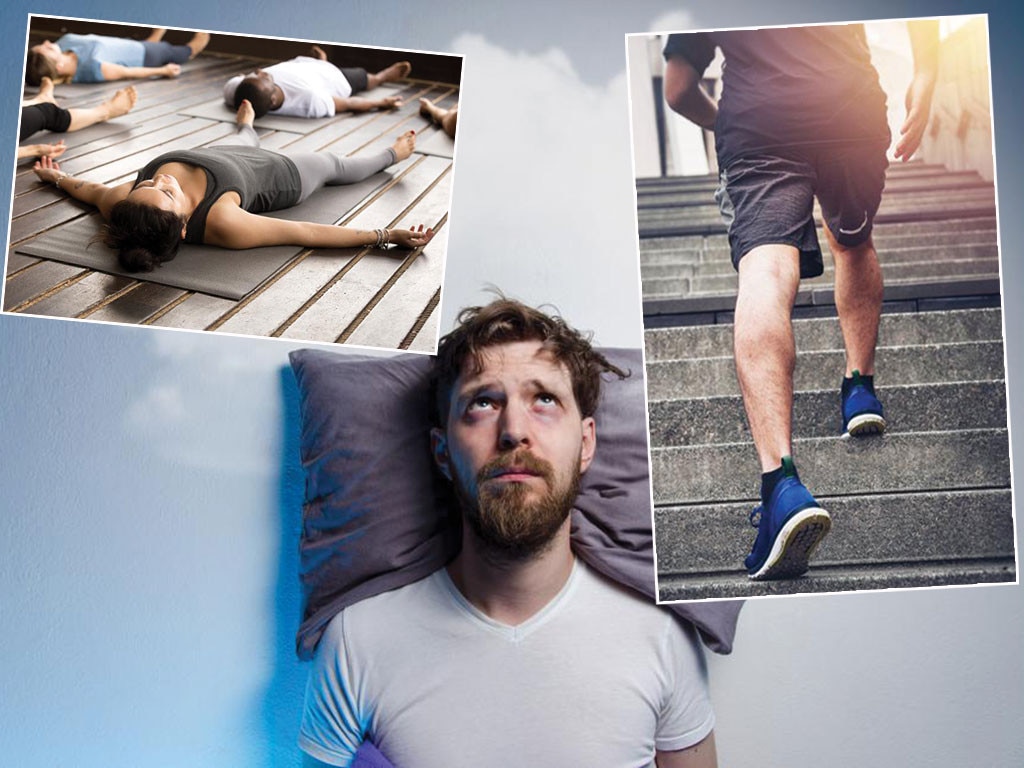What sitting does to your body
It’s easy to blame lockdown life for added hours of TV watching, but even pre-pandemic our backsides were parked for way too long. Here’s what to do about it.

Hands up if you have binge-watched box sets or Netflix recently. New figures released by Ofcom, Britain’s broadcasting regulator, last week suggest that it is likely that your TV-watching habit escalated along with the rest of the nation’s adults, who spent an average of 5 hours and 40 minutes a day - a third of their waking hours - watching TV and online video content, up by 47 minutes from 2019.
And this is not all the sitting we do. It’s easy to blame lockdown life for the added hours of TV watching, but even pre-pandemic our backsides were parked for an average of 8 hours 54 minutes a day at work, in the car and on the sofa, raising the risk of so-called sitting disease and the health implications - including an increased risk of heart disease, osteoporosis and obesity - it carries.
In the same week Tanni Grey-Thompson, the Paralympic champion and chairwoman of Ukactive, the body committed to promoting active lifestyles, called for the UK to become the most active nation in the world by 2030. We wonder whether she was having a laugh. A study of global exercise levels published in The Lancet revealed that the World Health Organisation ranked Britain a lowly 46th out of 168 countries in its league table of fit countries. So far, we do not seem to have launched ourselves off the sofa often enough for much hope of an improvement.
Incentive to move should come from knowing what all this sitting is doing to our health. People who sit for less than 30 minutes at a time have been shown to have the lowest risk of early death. Those who slouch and slump for hours at a time without moving face accelerated risk of disease and death. It’s grim reading, but here are the facts that might get us moving.
1 TO 2 HOURS SITTING A DAY
What it does:
As little as 60 minutes of continuous sitting can start to produce dramatic and unwelcome changes to circulation. A team from the Oregon Health & Science University in Portland asked 11 non-obese, healthy men aged 20 to 35 to sit for a total of three hours without moving their legs and found that flow-mediated dilation - the amount arteries are able to expand as a result of increased blood flow - was impaired by as much as 50 per cent after just an hour. Such changes to the arteries are an early marker for heart disease, indicating that they are becoming stiff and less able to pump blood around the body.

Another paper, published in the European Heart Journal, showed that an extra two hours a day spent sitting was associated with about 2 per cent higher average fasting blood sugar levels and 11 per cent higher circulating blood fats. The Australian authors of the report encouraged people to replace two hours a day of sitting time with standing or walking after discovering that switch to be associated with an 11 per cent lower average body mass index (BMI), a 7.5cm (3in) smaller average waist circumference and plummeting blood sugar and blood fat levels.
Ignore the advice, and the prognosis only gets worse over time. Men in their sixties who spent more than 84 minutes a day sitting still, compared with the average of 52 minutes, had 22 per cent lower bone density in their spine.
And an investigation of almost 8,000 middle-aged adults showed that those who frequently sat for more than 90 minutes at a stretch had a nearly twofold greater risk of death than those who almost always sat for less than 90 minutes at a time.
What to do about it:
At the very least, set an alarm on your phone or watch to prompt you to stand up and move for five minutes every half an hour. Then, if you can, engage in an activity that will get your heart pumping for at least 60 seconds - brisk walking, stair-climbing or star jumps work. Studies show that the more intense activity you manage in your break, the better.
3 TO 4 HOURS SITTING A DAY
What it does:
Four hours a day or more in the seated position means you are more likely to experience back pain and suffer a greater intensity of neck and shoulder pain. “Prolonged sitting in one position is never ideal,” says Ashley James, a specialist musculoskeletal physiotherapist and spokesperson for the Chartered Society of Physiotherapy.
“The key to avoiding physical aches and pains is to change sitting position as often as you can from a slouch to upright and fidgeting to slumping on your desk - all are better news for your spine and joints than sitting still.”

Overweight men who were asked to sit for three hours on a firm cushioned chair without moving their legs were found to experience “significant impairment” in artery and blood vessel function, a risk factor for cardiovascular disease.
What to do about it:
To offset this amount of sitting you need to do a 60 to 75-minute workout, cycle or run. “A 20-minute walk at lunchtime is not sufficient,” James says. “One of the most comprehensive studies on sitting of the last decade involving data on more than one million people showed that people who sat for up to four hours but who exercised for an hour a day had up to a 59 per cent lower risk of mortality than those who just sat still.”
However, the Norwegian authors of this paper in The Lancet found that exercise did not cancel out health risks if all of the sitting time was in front of the TV. “It suggests that people have
other unhealthy habits, such as eating more and drinking, when they watch TV,” James says.
5 TO 6 HOURS SITTING A DAY
What it does:
Sit for this long every day and you will probably feel stiff and sore with tight hamstrings and hip flexor muscles. “It’s a myth that muscles actually shorten with too much sitting, but you do need to keep moving around to avoid discomfort,” James says. “The same rule applies for reducing back pain.”
Repeated sitting has been shown to weaken bone mineral density in older women’s hip and thigh bones, regardless of how much daily exercise they do. Getting up to be active every 20 minutes helps to maintain bone health.
Sitting for five or more hours a day could also affect brain function. Researchers at the University of California, Los Angeles (UCLA) found that middle-aged people displayed greater thinning of the medial temporal lobe, a part of the brain involved in forming new memories, when they regularly sat for that long.
What to do about it:
Getting up to be active every 20 minutes helps to maintain bone health, so it’s worth building exercise breaks into your routine. It is possible, the UCLA researchers say, that what they call “mentally active sitting” - doing cognitively demanding tasks such as crossword puzzles, documentation, writing or computer games - may be less damaging, and future studies will focus on the effects that different types of sitting have on the brain.
7 PLUS HOURS SITTING A DAY
What it does:
This is where it gets serious. Long daily periods with few breaks are associated with weight gain around the middle (the worst place) and raised risk of diabetes, strokes and heart disease. A 2018 study showed that older women who sat for ten hours a day with little activity appeared to have accelerated biological ageing, with cells that were eight years older than their chronological age.
What to do about it:
Moving more is, of course, obligatory if you sit for this long, and even the smallest amount of physical activity will make a difference. This year an international team led by scientists from Glasgow Caledonian University (GCU) reported that the winning formula for offsetting long-term sitting is to do three minutes of vigorous exercise (such as running up stairs, circuits or hard cycling) for each hour of the day you have been on your backside, whether sitting at a desk or watching TV.
That exercise can be spread across the day or in a single session, and if you really can’t manage that intensity, the researchers said that it can be substituted by 12 minutes of lighter activity, such as walking for every hour of sitting. It can achieve a 30 per cent reduction in the odds of an early death, but even then you need to think about adding more activity. “The leftover hours should be spent generally moving around as much as you can,” says the study’s author, Sebastien Chastin, a professor of health behaviour dynamics at GCU.
The Times







To join the conversation, please log in. Don't have an account? Register
Join the conversation, you are commenting as Logout